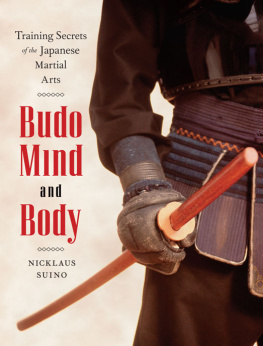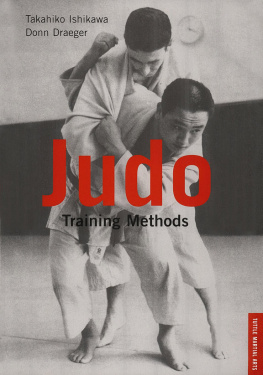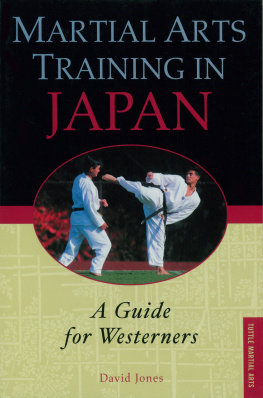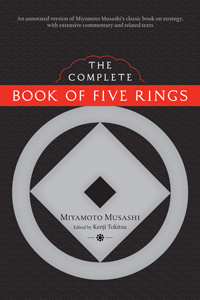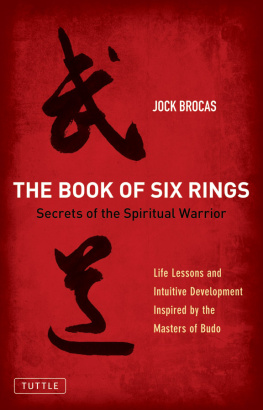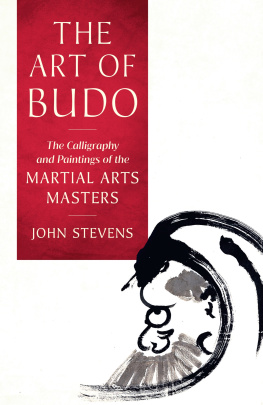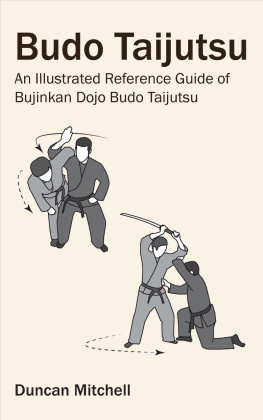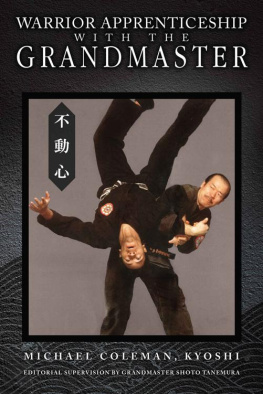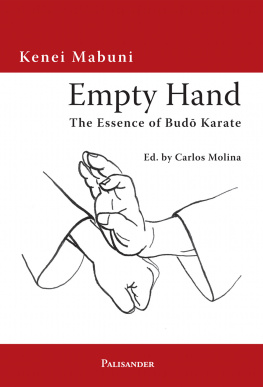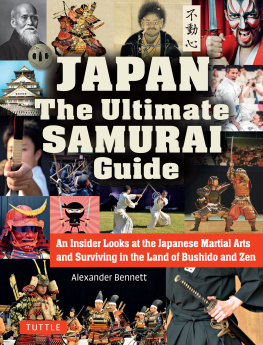Suino writes balanced, thoughtful works on budo, and this latest work is no exception.... This book is a nice introduction to budo for individuals new to the world of the dojo. It is short on hyperbole and long on experience and common sense. I would recommend it as an appropriate work for novice students, although the clarity of Suinos prose and the sincerity of his convictions regarding the benefits of studying budo would recommend it to any reader who shares something of his experience and his beliefs.
Journal of Asian Martial Arts
ABOUT THE BOOK
Budo is about learning more than how to fight; true budo is a way of seeking and uncovering meaning in life. Here, Nicklaus Suino, one of the leading iaido teachers in North America, gives expert advice on how to get the most from training in traditional Japanese martial arts such as iaido, kendo, aikido, judo, kyudo, and karate-do. He reveals the essential components of budo training, including:
- how to determine the principles behind techniques
- how to develop physical strength, technical strength and strength of character
- how to discipline your mind to really focus and be in the present moment
NICKLAUS SUINO is a sixth-degree black belt in Muso Jikiden Eishin Ryu iaido. He is codirector of the iaido division and director of the judo division of the Shudokan Martial Arts Association, and is a regional director of the North American branch of the International Martial Arts Federation. He lives in Traverse City, Michigan, and teaches iaido and other martial arts at seminars throughout North America. Information on his seminars can be found at www.artofjapaneseswordsmanship.com.
Sign up to learn more about our books and receive special offers from Shambhala Publications.

Or visit us online to sign up at shambhala.com/eshambhala.
Budo
Mind
and
Body

Training Secrets of the Japanese Martial Arts

Nicklaus Suino

Weatherhill
Boston & London
2013
Weatherhill
An imprint of Shambhala Publications, Inc.
Horticultural Hall
300 Massachusetts Avenue
Boston, Massachusetts 02115
www.shambhala.com
This is a revised and updated edition of a book previously published in BUUN under the title Arts of Strength, Arts of Serenity.
1996, 2006 by Nicklaus Suino
Cover design by Jonathan Sainsbury
Cover art: Corbis
The techniques of the martial arts are dangerous if not practiced correctly. Neither the author nor the publisher is responsible for the results of your choice to practice these techniques; you do so at your own risk. Please use caution when handling any weapons and be sure to consult a qualified teacher before attempting to perform any new martial arts skills.
All rights reserved. No part of this book may be reproduced in any form or by any means, electronic or mechanical, including photocopying, recording, or by any information storage and retrieval system, without permission in writing from the publisher.
The Library of Congress catalogues the previous edition of this book as follows:
Suino, Nicklaus.
Budo mind and body: training secrets of the Japanese martial arts/Nicklaus Suino.1st ed.
p. cm.
Rev. ed. of: Arts of strength, arts of serenity. 1996.
Includes bibliographical references.
eISBN 978-0-8348-2353-2
ISBN 978-0-8348-0568-2 (hardcover)
ISBN 978-0-8348-0573-6 (paperback)
1. Martial artsJapanTraining. 2. Martial artsJapanPsychological aspects. I. Suino, Nicklaus. Arts of strength, arts of serenity. II. Title.
GV1100.77.A2S85 2006
613.7148dc22
2005042353
To Pamela
Enchanting,
Enlightened,
Light of my life
CONTENTS
THE MATERIAL in this book was first published in 1996, with the title Arts of Strength, Arts of Serenity. In the years since, it has been my distinct pleasure to have feedback from many readers, both newcomers to budo and accomplished martial artists. I am happy to say that most readers were kindgraciously pointing out sections of the book they enjoyedand that only a few chose to point out the areas where I could have done better. Except for one or two copies on my martial arts bookshelf, the first edition completely sold out.
Some superb instructors have honored me by recommending this book to their martial arts students. Paul Godshaw, of Mission Viejo, California, who runs a brilliant Shotokan karate dojo, has a few copies that he hands out to his students when it seems appropriate. Gary Legacy, of St. Thomas, Ontario, who heads up a huge organization of expert Shorin-ryu karate students, recognized our kindred goals in teaching budo and brought a few of his black-belts along to our iaido practice sessions. John Gage, of Tokyo, Japan, head of the foreign department of the International Martial Arts Federation (IMAF), has done more to support my martial arts adventures than any other human being.
Further, I am happy to say that my Japanese mentors, Yamaguchi Katsuo Sensei and Sato Shizuya Sensei, have not yet disowned me for the words written here. My personal view is that the explanations in this book are as timely as ever.
Training in traditional martial arts is one of the most valuable pursuits I know, and the admonitions in these pages to train with intensity and work tirelessly for self-improvement still ring true. The evolution of budo continues. Some products of change are goodgreat technicians are refining their techniques to make them more effective than everand some are dubious. More than ever, charlatans are offering martial arts instruction with no historical basis or practical effectiveness. I hope this book will guide students away from these schools and towards instructors who practice the philosophy set forth in these pages.
So it was with no small pleasure that I agreed to revise this material for publication when asked to do so by Beth Frankl, gracious martial arts editor at Shambhala, herself an accomplished student of aikido. Some sections have been rearranged to emphasize the real mission of this book; to point out that budo is an endeavor with a distinct goal involving the body, mind, and spirit. Many small editorial changes have been made. The resources sections in the appendix have been updated. We have worked hard to eliminate any errors of fact or form.
I hope this book is a benefit to you, the reader, as you explore the world of budo. It is a lifelong quest with many challenges, and still more rewards. I congratulate you for stepping onto the path to enlightenment.
A man who has mastered an art reveals it in his every action.
Samurai maxim
AFTER A HARD DAY of martial arts practice, while enjoying a cold drink with training partners, we sometimes share stories of the masters of old. These are stories of men and women who were able to perform feats of martial skill that seem almost magical to us today. The stories are an inspiration to train harder, and they hint at what might be possible if we keep practicing long enough. The images are so compelling that whole systems of study have grown up around certain mastersmen like Ueshiba Morihei, the founder of aikido, who was said to be able to throw his students to the ground with the strength of a single finger. Ueshiba could casually drop two, three, or even ten attackers. At the same time, there was more to the old master than mere physical skill. Considered an enlightened man, Ueshiba was known for such sayings as Love is the highest principle of the martial arts, and To injure an opponent is to injure yourself.
Next page
